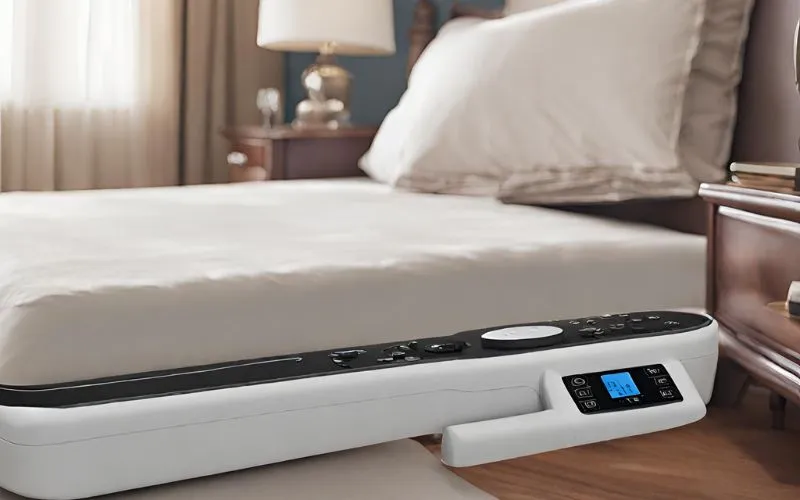Essential Tips for Maintaining Adjustable Bed Remote Controls

Introduction
Adjustable beds have become increasingly popular due to their ability to provide customizable comfort and relief from various health conditions. One crucial component of an adjustable bed is the remote control, which allows users to adjust the bed’s position, massage settings, and other features with ease. In this comprehensive guide, we will explore the essential practices for maintaining adjustable bed remote controls to ensure their longevity and optimal functionality.
Understanding Adjustable Bed Remote Controls
What Are Adjustable Bed Remote Controls?
Adjustable bed remote controls are handheld devices designed to operate and adjust various functions of an adjustable bed. These functions typically include changing the bed’s position, activating massage settings, and controlling other features such as lighting and USB ports. The remote control serves as a convenient tool for users to personalize their sleeping and resting experience without manually adjusting the bed.
Types of Adjustable Bed Remote Controls
There are several types of adjustable bed remote controls available, ranging from basic models to advanced, multi-functional devices. Basic remote controls feature simple buttons for adjusting the bed’s position and activating massage functions. On the other hand, advanced models may include additional features such as preset memory settings, programmable options, and wireless connectivity for seamless operation.
Importance of Maintaining Adjustable Bed Remote Controls
Maintaining adjustable bed remote controls is crucial for ensuring the longevity and optimal performance of the bed’s functionality. By incorporating regular maintenance practices, users can prevent potential issues and extend the lifespan of the remote control.
Here are some detailed steps and practices to effectively maintain adjustable bed remote controls:
- Cleaning: Regularly clean the remote control surface with a gentle, non-abrasive cloth to remove dust, dirt, and any residues that may accumulate over time. Pay particular attention to the buttons and crevices to ensure smooth operation.
- Battery Replacement: It is important to replace the batteries in the remote control as soon as they start to weaken. This proactive approach ensures uninterrupted functionality and eliminates the frustration of a non-responsive remote control.
- Preventive Measures: Implement preventive measures such as storing the remote control in a designated place, away from direct sunlight and extreme temperatures. Additionally, avoid exposure to liquids and accidental drops to maintain the structural integrity of the remote control.
Understanding the significance of maintenance allows users to maximize the benefits of their adjustable beds. By adhering to these maintenance practices, individuals can consistently experience the desired level of comfort, convenience, and support provided by their adjustable beds.
Common Issues with Adjustable Bed Remote Controls
Battery Life and Replacement
Battery Life and Replacement
One common issue that users encounter with adjustable bed remote controls is related to battery life and replacement. Over time, the batteries in the remote control may lose their efficiency, leading to issues such as unresponsive buttons or erratic behavior. It is important for users to monitor the battery life and replace the batteries as needed to ensure reliable operation of the remote control.
- Factors affecting battery life
- Best practices for monitoring battery life
- Choosing the right replacement batteries
- Steps for replacing the batteries
Programming and Syncing Issues
Programming and syncing issues can also arise with adjustable bed remote controls, especially in models with advanced features and wireless connectivity. Users may experience difficulties in programming custom settings or syncing the remote control with the bed’s base. Proper troubleshooting methods and guidance for re-syncing the remote control can help users address these issues effectively.
Physical Damage and Wear
Physical Damage and Wear
Adjustable bed remote controls are susceptible to physical damage and wear, especially in households with frequent usage. Understanding the potential risks and implementing preventive measures is crucial for maintaining the longevity and functionality of the remote control.
Common sources of physical damage and wear:
- Accidental Drops: Mishandling the remote control can lead to accidental drops, potentially causing internal damage or malfunction.
- Liquid Spills: Exposure to liquid spills can result in short circuits and corrosion, affecting the electronic components of the remote control.
- Regular Wear and Tear: Continuous usage and handling can lead to wear and tear, compromising the structural integrity and operational efficiency of the remote control.
Preventive measures to mitigate physical damage:
- Protective Cases: Utilizing protective cases can shield the remote control from impacts and potential damage caused by accidental drops.
- Water-Resistant Design: Consider remote controls with water-resistant features to minimize the impact of liquid spills and moisture exposure.
- Periodic Maintenance: Implementing regular cleaning and maintenance routines can help prevent wear and tear, extending the lifespan of the remote control.
Essential Maintenance Tips for Adjustable Bed Remote Controls
Regular Cleaning and Inspection
Regular cleaning and inspection are fundamental maintenance practices for adjustable bed remote controls. Users should routinely clean the remote control surface and buttons using a soft, damp cloth to remove dust, debris, and residues. Additionally, periodic inspection for signs of wear, loose components, or malfunctioning buttons is essential to address potential issues proactively.
Here are some detailed steps for regular cleaning and inspection:
- Use a mild detergent solution and a microfiber cloth to clean the remote control surface thoroughly.
- Inspect the buttons for any sticky or unresponsive behavior and clean them with compressed air or a cotton swab dipped in isopropyl alcohol, if necessary.
- Check the battery compartment for any signs of corrosion or leakage, and replace the batteries if needed.
- Examine the connection ports for any debris or damage, and clean them using a small brush or compressed air.
- Regularly test the functionality of the remote control to ensure all buttons and features are working as intended.
Proper maintenance of the adjustable bed itself is crucial to the longevity and performance of the remote control. Here are some additional tips to ensure optimal functionality:
- Periodically inspect the bed frame for loose screws, connections, or damaged components, and tighten or replace them as necessary.
- Keep the area around the bed clean to prevent dust and debris from accumulating near the remote control and affecting its operation.
- Follow the manufacturer’s guidelines for adjusting the bed and using the remote control to avoid unnecessary strain on the mechanisms.
Preventive Maintenance Practices
Implementing preventive maintenance practices is crucial for ensuring the longevity and functionality of your adjustable bed remote control. Here are some detailed preventive maintenance practices to keep your remote control in optimal condition:
- Proper Storage: Always store the remote control in a safe and dry location to protect it from dust, moisture, and potential damage. Consider using a designated case or pouch for added protection.
- Temperature Control: Avoid exposing the remote control to extreme temperatures, as this can affect the internal components and lead to malfunctions. Keep the device at a moderate temperature range for optimal performance.
- Gentle Handling: Handle the remote control with care to prevent premature wear and potential damage. Avoid dropping or mishandling the device, and be mindful of the buttons and casing to maintain its integrity.
Following these preventive maintenance practices will significantly reduce the risk of premature wear, malfunctions, and damage, ultimately prolonging the lifespan of your adjustable bed remote control. Additionally, adhering to the usage guidelines and handling instructions provided by the manufacturer is essential for the effective maintenance of the remote control.
Troubleshooting and Quick Fixes
Being equipped with troubleshooting knowledge and quick fixes can empower users to address minor issues with adjustable bed remote controls promptly. Familiarizing oneself with reset procedures, button calibration, and seeking information from the product manual or online resources can aid in resolving common operational concerns without extensive intervention.
Conclusion
Maintaining adjustable bed remote controls is an essential aspect of preserving the functionality and user experience of adjustable beds. By adopting proactive maintenance practices, addressing common issues, and implementing preventive measures, users can ensure that their adjustable bed remote controls remain in optimal working condition, thus enhancing their overall enjoyment and convenience. The knowledge and actionable tips provided in this guide aim to empower users to maintain their adjustable bed remote controls effectively, contributing to the longevity and reliability of their adjustable beds.




